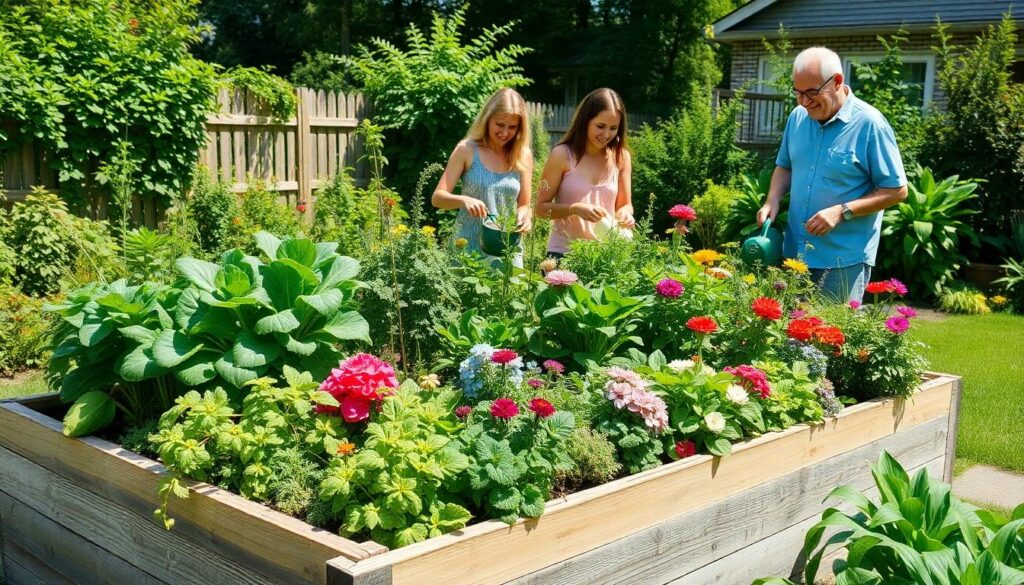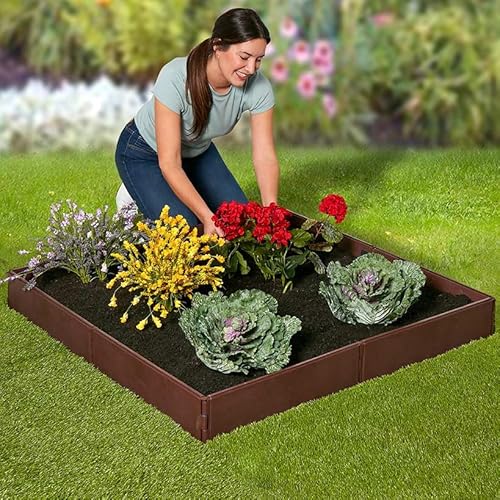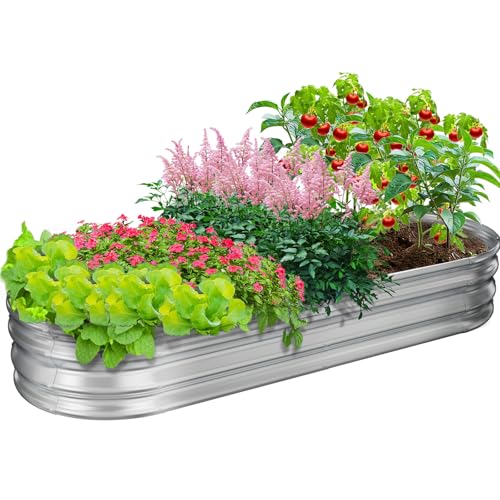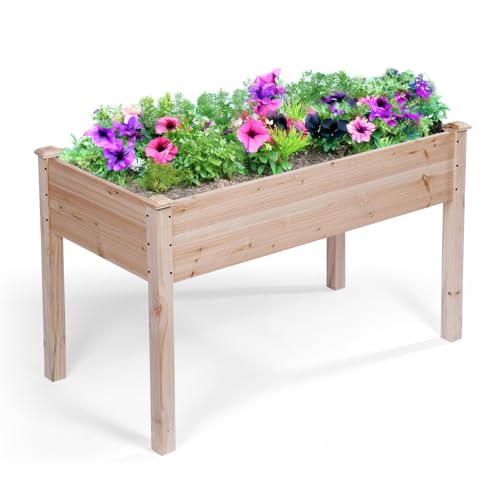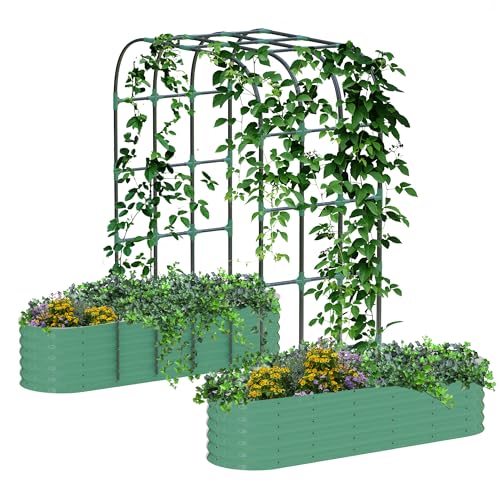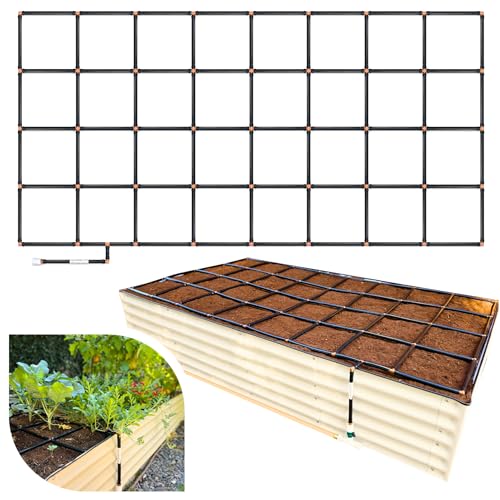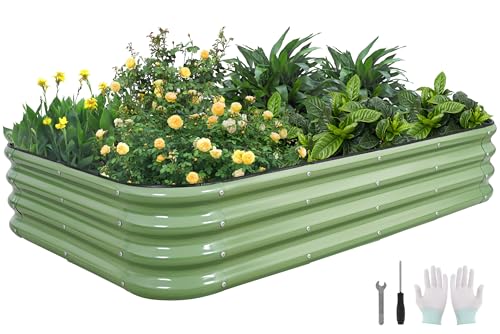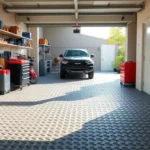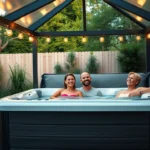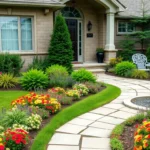Wanting to transform your outdoor space with a flourishing garden? Raised garden beds offer the perfect solution for both novice and experienced gardeners. We’ve gathered creative and practical raised garden bed ideas that’ll elevate your gardening game while adding visual appeal to your industry.
These versatile structures aren’t just functional—they’re also design elements that can complement any yard style. From rustic wooden boxes to modern metal frames, raised beds provide better drainage, prevent soil compaction, and reduce back strain during planting and harvesting. Plus, they’re ideal for spaces with poor native soil or limited ground area.
Join us as we explore stunning raised garden bed designs that combine aesthetics with productivity. Whether you’re looking to grow vegetables, herbs, or flowers, these ideas will inspire you to create a garden space that’s both beautiful and bountiful.
10 Creative Raised Garden Bed Ideas for Small Spaces
1. Vertical Tiered Gardens
Vertical tiered gardens maximize your growing space by building upward rather than outward. These stepped designs allow you to grow different plants on each level while maintaining a small footprint. Plants cascade downward, creating a lush display that works well for strawberries, herbs, and trailing flowers. We’ve seen these work wonderfully against walls or fences where horizontal space is limited.
2. Corner L-Shaped Beds
Corner L-shaped beds transform unused corner spaces into productive growing areas. These clever designs fit snugly into right angles of patios, balconies, or yard corners. You’ll get more growing space than a traditional rectangular bed while utilizing areas that often go wasted. Many gardeners use these for combining vegetables and flowers in one cohesive design.
3. Railing Planters
Railing planters attach directly to balcony or deck railings, turning unused vertical space into a garden. These narrow but effective growing containers don’t take up any floor space. Your herbs, lettuce, and annual flowers will thrive in these elevated positions where they receive excellent air circulation. Most designs include drainage holes and brackets that securely attach to standard railings.
4. Repurposed Container Gardens
Repurposed container gardens give new life to old items while creating unique gardening spaces. Old bathtubs, wheelbarrows, wooden crates, and even dresser drawers can be transformed into charming raised beds. These containers add personality to your garden while providing adequate growing depth for most plants. Drainage holes are essential—simply drill them into the bottom of your chosen container.
5. Rolling Raised Beds
Rolling raised beds provide flexibility for changing sunlight patterns or weather conditions. These mobile gardens typically stand on sturdy casters that can be locked in place when needed. Your plants can follow the sun or be moved to protected areas during storms. We recommend constructing these beds from lightweight but durable materials like cedar or composite boards.
6. Spiral Herb Gardens
Spiral herb gardens pack impressive growing space into a small circular footprint. These distinctive raised beds wind upward in a spiral shape, creating multiple micro-climates for various herbs. Your sun-loving plants like rosemary and thyme thrive at the top, while moisture-loving herbs like mint grow happily at the bottom. Most spiral gardens can fit over 20 different herb varieties in just a few square feet.
7. Window Box Raised Beds
Window box raised beds bring gardens right up to your living space. These narrow, rectangular containers mount below windows or along porch edges, providing convenient access to fresh herbs or flowers. Your plants will receive excellent light in these positions while adding visual interest to exterior walls. Regular watering is crucial for these smaller containers, which dry out faster than larger beds.
8. Keyhole Gardens
Keyhole gardens feature a unique circular design with a notch and central compost area. These efficient systems allow you to reach all plants without stepping into the bed. Your kitchen scraps go directly into the central compost basket, which feeds and waters the surrounding plants. Most keyhole gardens are 6-7 feet in diameter but produce an impressive amount of vegetables in that space.
9. Stacked Container Towers
Stacked container towers create vertical growing space through strategically stacked pots or containers. These space-efficient systems allow you to grow dozens of plants in the footprint of a single container. Strawberries, lettuce, and trailing herbs flourish in these arrangements. Commercial versions are available, but DIY towers can be crafted from terra cotta pots, PVC pipes with cutouts, or specialized stacking containers.
10. Hanging Gutter Gardens
Hanging gutter gardens use rain gutters as linear growing spaces for shallow-rooted plants. These innovative beds can be attached to walls, fences, or balcony edges to create growing space where none existed before. Your salad greens, radishes, and small herbs grow perfectly in these narrow but effective containers. Proper drainage holes prevent waterlogging, while the metal or vinyl construction stands up to weather conditions.
Using Reclaimed Materials for Budget-Friendly Raised Garden Beds
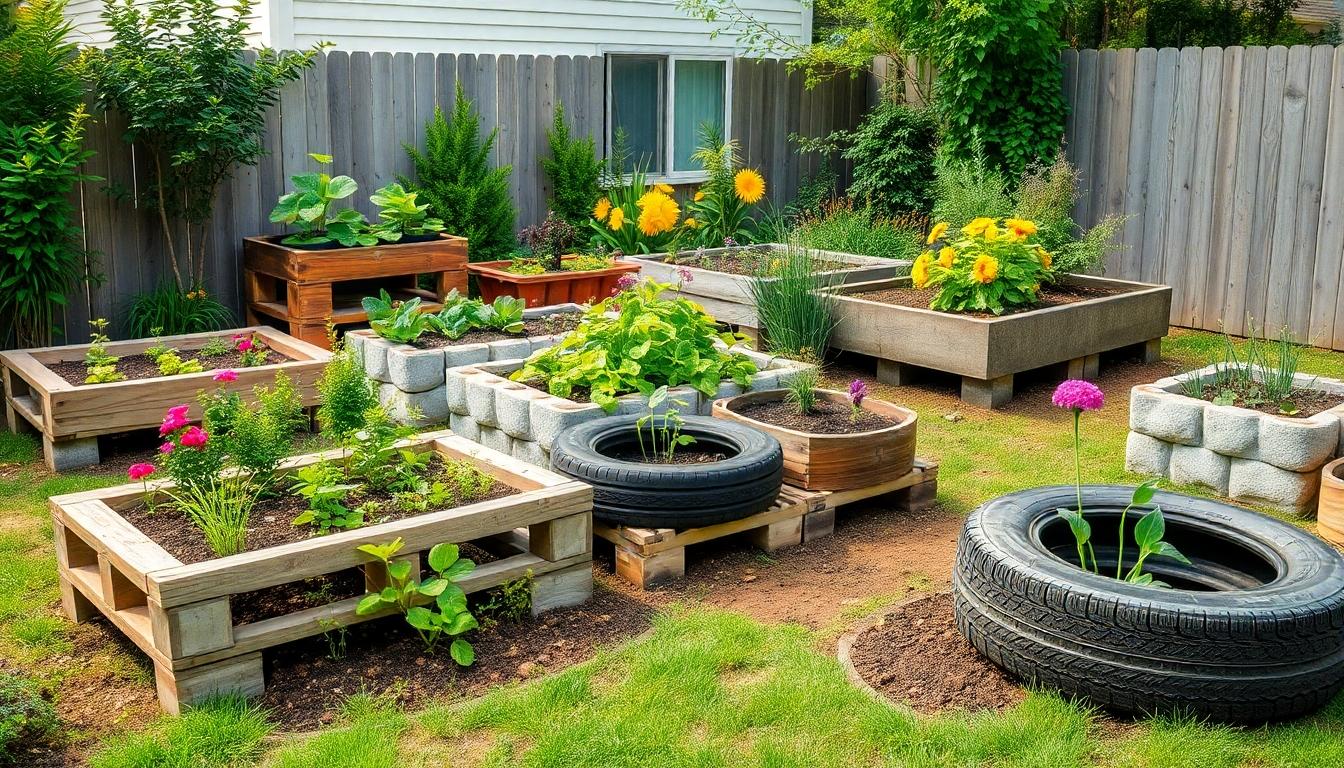
Looking to create raised garden beds without very costly? Repurposing reclaimed materials offers an eco-friendly, cost-effective solution for garden projects.
Repurposed Wooden Pallets
Wooden pallets present an excellent opportunity for budget-conscious gardeners to build raised beds with minimal investment. These widely available structures can be fully disassembled for lumber or positioned vertically to create space-saving garden answers. When selecting pallets, always look for heat-treated options (marked with “HT”) to ensure they’re free from harmful chemicals that could contaminate your soil. Adequate drainage is essential for pallet gardens, so we recommend drilling several holes or installing breathable fabric liners to prevent waterlogging issues. The beauty of pallet projects lies in their accessibility – most can be completed with basic tools, making them perfect for gardeners of all skill levels.
Concrete Block Gardens
Concrete or cinder blocks offer durability and flexibility when creating modular raised bed structures. Arranging these blocks in simple rows or stacked configurations allows you to customize both the height and shape of your garden beds to suit your exact needs. The unique design of these blocks creates additional planting opportunities – fill the hollow cavities with soil to grow herbs, flowers, or strawberries, effectively doubling your growing space. Gardeners in cooler climates benefit from concrete’s heat-retention properties, which can extend growing seasons by keeping soil warmer longer. For safety considerations, avoid using older cinder blocks (particularly those manufactured before 2000) that may contain fly ash with potential heavy metal content.
Additional Upcycled Materials
Reclaimed wood transforms discarded lumber, logs, or old furniture pieces into charming garden bed frames. Dressers, tables, and other wooden furniture can find new life in your garden when properly repurposed and lined with industry fabric to control weed growth.
Old tires create interesting tiered planting spaces when stacked and filled with soil. Ensure any tires used are thoroughly cleaned and modified with drainage holes to prevent water accumulation around plant roots.
Feed tanks and stock tanks offer instant raised bed answers with minimal modification required. These galvanized livestock troughs typically come with built-in drainage plugs, simplifying the setup process considerably.
Fabric grow bags provide lightweight, portable options for small-space gardening. These reusable containers work particularly well for root crops like potatoes and can be easily moved as needed throughout the growing season.
When working with reclaimed materials, always prioritize non-toxic options and ensure proper drainage for plant health. Naturally rot-resistant woods such as cedar or redwood will extend the life of your garden beds significantly. Finding materials can be as simple as checking construction sites, local recycling centers, or online marketplaces for free or low-cost options that keep these items out of landfills.
Vertical Raised Garden Beds to Maximize Growing Space
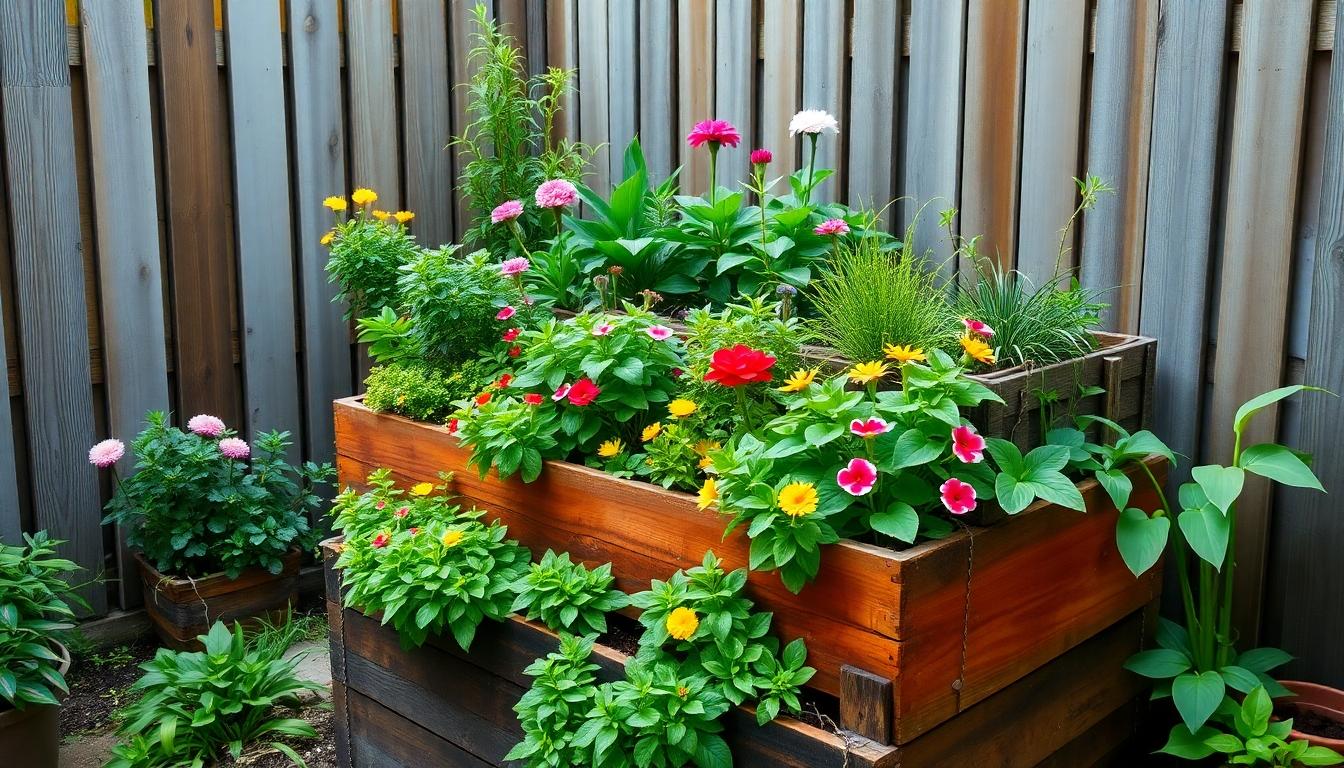
When space is at a premium in your garden, thinking vertically offers an innovative solution for maximizing your growing area. Vertical raised garden beds allow you to expand your planting space upward rather than outward, making them perfect for small yards or urban gardens.
Tiered Garden Bed Designs
Tiered garden beds represent one of the most efficient ways to increase your growing space while adding visual interest to your industry. These multi-level structures work exceptionally well on slopes or uneven terrain, transforming problematic areas into productive growing zones. The stepped design naturally improves water retention and drainage, giving plants at different levels optimal growing conditions. Step-up raised beds allow you to grow various plant types at different heights, making them not only space-efficient but also more accessible for gardening tasks. You can easily reach plants at different levels without excessive bending or kneeling, reducing strain on your back and knees during maintenance.
Wall-Mounted Planter Systems
Wall-mounted planters offer an excellent solution for gardeners with extremely limited ground space. These vertical growing systems attach directly to walls, fences, or other vertical surfaces, transforming unused vertical areas into productive growing space. Ideal for herbs, strawberries, lettuce, and other compact plants, wall-mounted planters keep your harvest within easy reach while saving valuable floor space. Vertical trellises incorporated into raised beds provide support for climbing vegetables like cucumbers, peas, and tomatoes. Plants naturally grow upward on these structures, keeping fruit off the ground and reducing disease issues. Arch trellises can connect separate raised beds across walkways, creating an attractive garden entrance while supporting vining plants overhead. This design effectively doubles your growing area by utilizing the vertical space above garden paths.
Unique Shapes and Configurations for Stylish Raised Beds
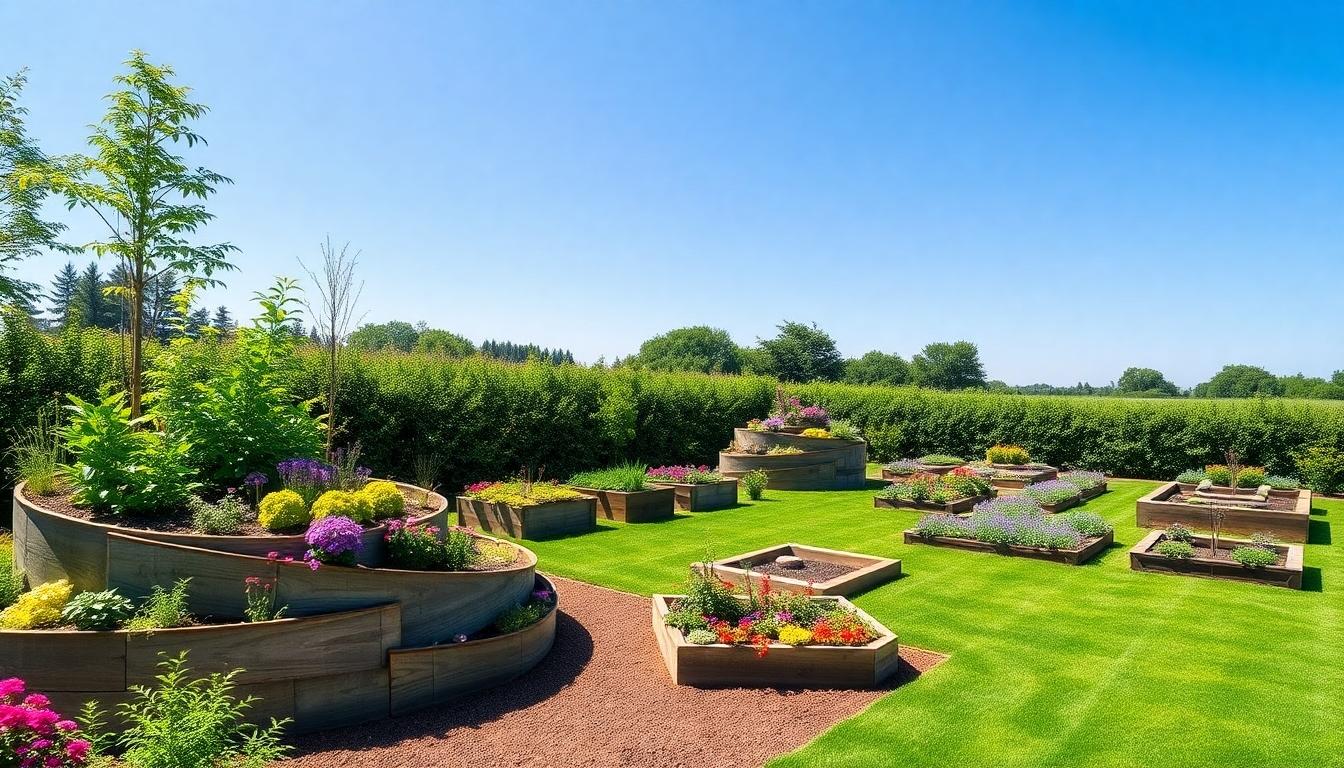
Moving beyond traditional rectangular designs, unique shapes and configurations can transform your raised beds into stunning garden features that enhance your industry while maximizing growing space.
Spiral and Curved Garden Beds
Curved garden beds create a visually appealing flow in your industry and work exceptionally well on sloped yards by establishing level planting zones. These flowing designs soften the overall garden aesthetic while providing practical growing areas for various plants. Spiral configurations offer remarkable space efficiency, making them perfect for herb gardens where you’ll want quick access to culinary plants from all sides. The graceful curves allow for strategic placement of shrubs, perennials, and trailing plants along the edges, creating a lush, layered look that blends naturally with your yard’s contours.
Geometric Pattern Layouts
Modular configurations dominate practical raised bed designs, with square, rectangular, and L-shaped beds offering versatility for various garden spaces. The “Four-Garden Classic” layout arranges beds symmetrically around central pathways, creating an organized kitchen garden that’s both functional and attractive. This configuration makes maintenance and harvesting incredibly efficient while providing a formal, structured appearance. Diamond or hexagonal patterns, though less common, can be adapted using angular framing techniques similar to those used in trapezoidal beds. These distinctive geometric shapes create visual interest and can serve as striking focal points in your garden industry while still providing ample growing space for your favorite plants.
Elevated Raised Beds for Easier Gardening Access
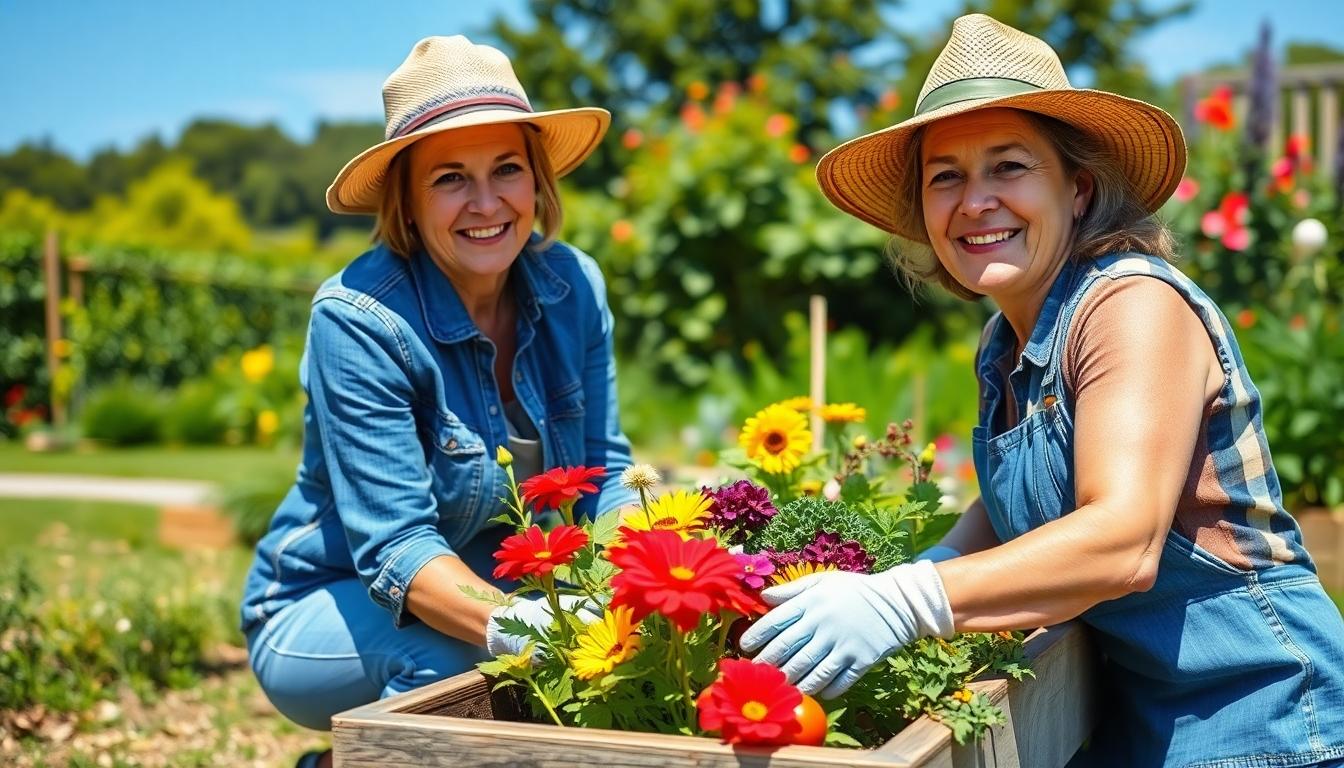
Elevated raised beds provide gardeners with important ergonomic advantages by reducing strain on backs, knees, and joints. These accessible gardening answers bring the soil level closer to you, minimizing bending while maximizing comfort and enjoyment.
Waist-High Garden Bed Designs
Waist-high garden beds are specifically constructed at a height of 30 to 36 inches, creating an optimal working level that eliminates excessive bending and stooping. These elevated designs are perfect for gardeners seeking comfort or those with back problems who still want to enjoy their gardening hobby without pain. Various materials work well for constructing these beds, including weather-resistant woods, composite materials, or even repurposed items that provide the necessary height.
Space efficiency becomes a natural advantage with waist-high beds, as they can easily incorporate vertical gardening elements. Adding trellises or arbors to these elevated structures allows plants to grow upward, effectively doubling your growing space without expanding your garden’s footprint. Vining vegetables, flowering climbers, and ornamental plants can all thrive in these integrated vertical systems while remaining accessible at a comfortable height.
Wheelchair-Accessible Options
Wheelchair-accessible raised beds require thoughtful design considerations to ensure comfortable gardening for everyone. The most important feature is creating wide paths between garden beds—at least 3 feet wide—to accommodate wheelchair movement and turning radius throughout the garden area. This spacing allows wheelchair users to navigate freely between growing areas without obstruction.
Bed height requires careful planning for wheelchair gardeners, with the optimal surface typically sitting 24-30 inches high to allow comfortable reaching while seated. Incorporating ramps or flat sections near the beds further enhances accessibility, providing stable surfaces for positioning and gardening activities. The bed width should remain narrow enough (approximately 2-2.5 feet) to ensure all plants remain within arm’s reach from a seated position, making tending and harvesting possible without stretching or straining.
Multi-Function Raised Garden Bed Solutions
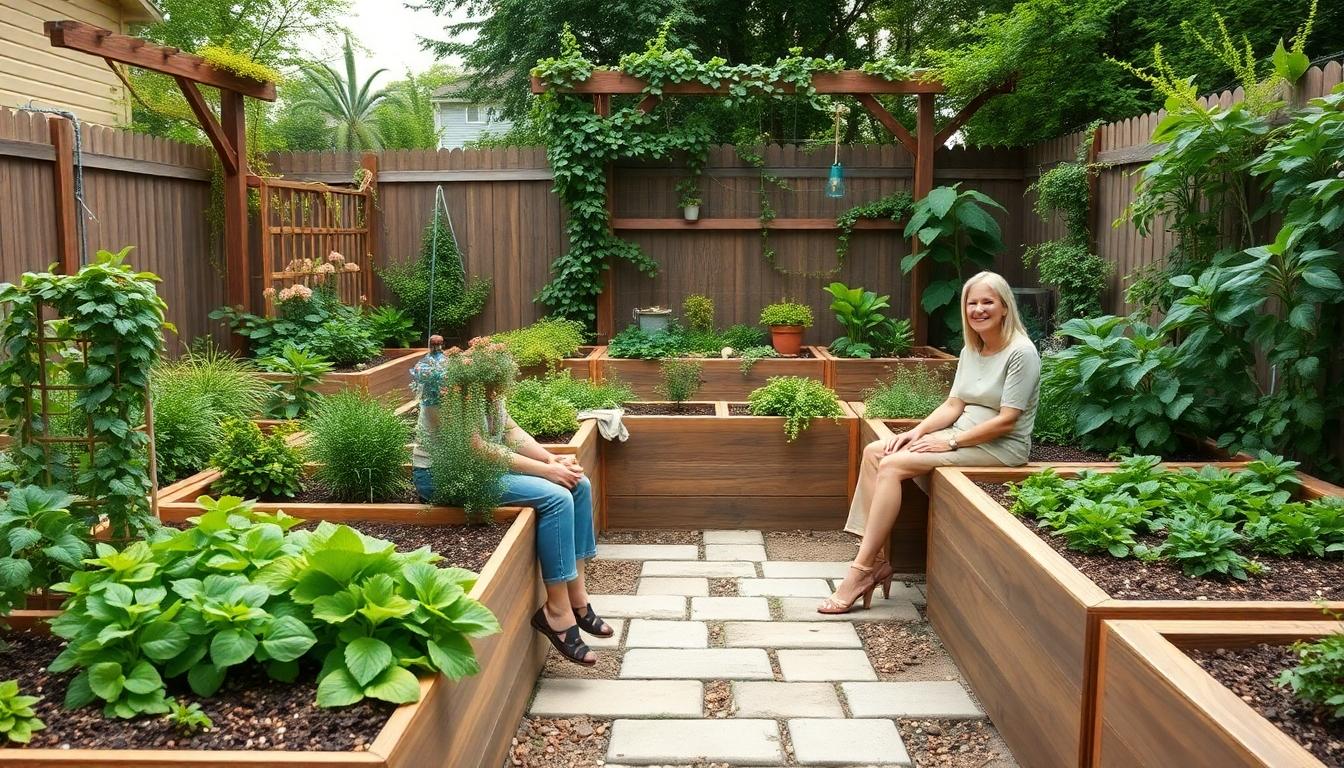
Raised garden beds can do much more than simply hold your plants. With thoughtful design, they transform into multifunctional elements that maximize your garden’s potential while improving its beauty and usability.
Incorporating Vertical Elements
Trellises and obelisks added to raised beds create valuable vertical growing space for climbing plants like cucumbers, beans, and flowering vines. These vertical elements instantly maximize your growing area while adding visual interest and height to your garden design. Garden trellises can connect multiple raised beds to create inviting entrance ways with covered arches, turning functional growing spaces into architectural features that define your garden’s layout.
Multi-Level Designs
Stepped raised beds with multiple tiers offer both practical and aesthetic advantages in your garden space. These multi-level designs create visual interest while allowing you to plant different varieties at various heights based on their needs. We’ve found that stepped beds work particularly well on sloped properties, turning challenging terrain into an asset with integrated pathways or seating areas that enhance both the functionality and beauty of your garden industry.
Built-In Seating Areas
Built-in bench seating transforms raised beds into comfortable outdoor living spaces where you can relax while surrounded by your flourishing plants. These clever designs feature bench sections at the ends of beds, creating seamless integration between gardening areas and leisure spaces. Materials for these benches typically match the raised bed construction—using the same wood or recycled plastic ensures a cohesive, polished look throughout your garden design.
Storage-Integrated Garden Beds
Smart storage answers incorporated directly into raised bed designs help keep your garden tools organized and readily accessible. These functional beds include specialized compartments beneath the growing area or within the frame structure, eliminating the need for separate storage sheds. Storage-integrated beds work best when constructed from sturdy materials like wood or composite boards that can support the additional features while withstanding outdoor conditions. Consider adding hinged lids or sliding panels to protect stored items from weather exposure while maintaining easy access during gardening sessions.
Specialized Raised Beds for Specific Plants
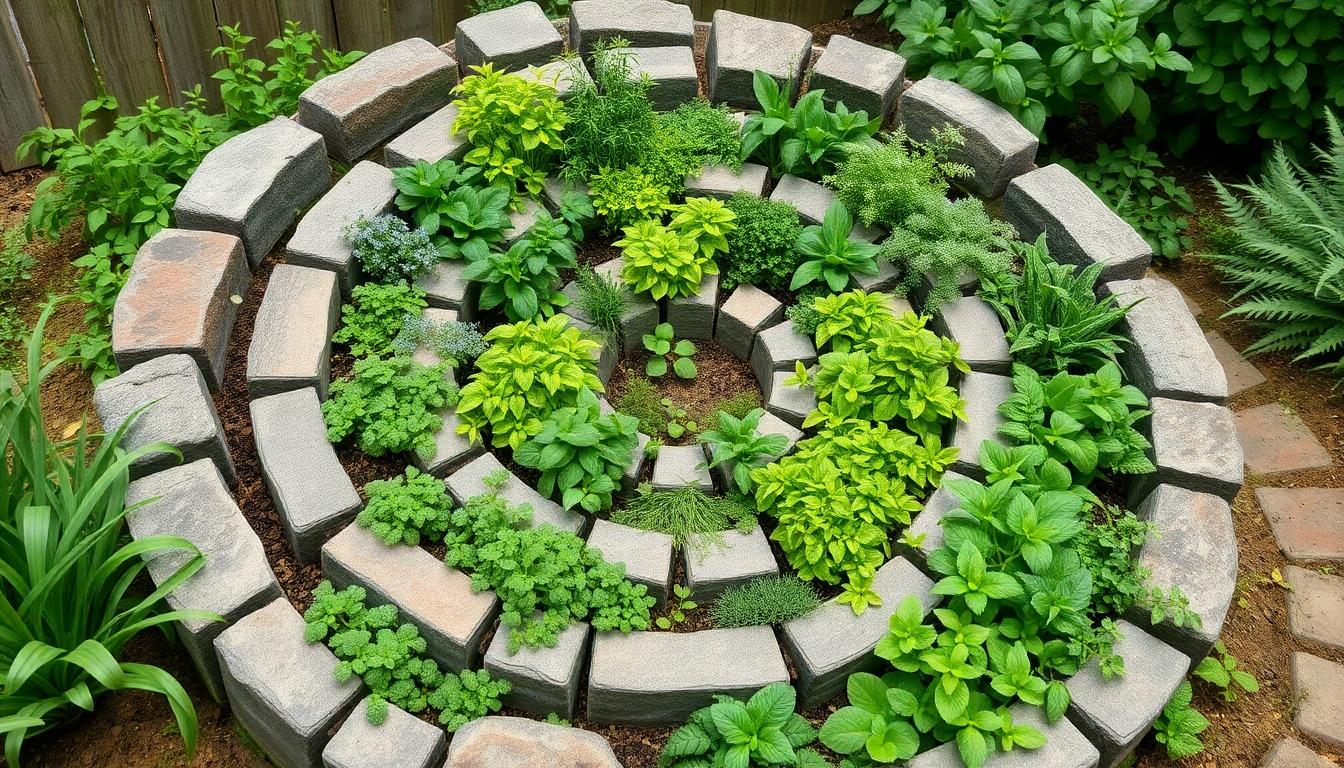
Raised garden beds can be customized to meet the unique needs of different plant varieties, maximizing growth potential and harvest yields. By designing beds with exact plants in mind, you’ll create optimal growing conditions that lead to healthier, more productive gardens.
Herb Spiral Gardens
Herb spiral gardens represent an ingenious vertical gardening technique that combines functionality with aesthetic appeal. These distinctive structures are typically constructed using stone or brick arranged in a spiral pattern that cleverly maximizes growing space in a compact footprint. The spiral design creates a natural gradient of growing conditions, regulating soil temperature and moisture levels throughout different sections of the spiral. At the top, you’ll find drier conditions perfect for Mediterranean herbs like rosemary and thyme, while the lower sections retain more moisture for plants like mint and parsley. This natural microclimate variation allows you to grow many herb varieties with different requirements in a single structure, making efficient use of limited garden space while creating a stunning focal point.
Square Foot Gardening Layouts
Square foot gardening transforms traditional raised bed cultivation into a highly organized and efficient growing system. This method divides your raised bed into one-foot squares, creating a grid where each section houses a exact number of plants based on their mature size. Larger plants like tomatoes might occupy an entire square, while smaller crops such as radishes can be planted 16 per square. The precise spacing prevents overcrowding, promotes healthy plant development, and dramatically increases yield per square foot compared to conventional row gardening. Plants receive adequate nutrients, air circulation, and sunlight in this arrangement, leading to stronger growth and fewer pest problems. Many gardeners find this approach particularly beneficial for growing vegetables, as it simplifies planning, planting, and maintenance while maximizing harvest from limited space.
Season-Extending Raised Garden Bed Modifications
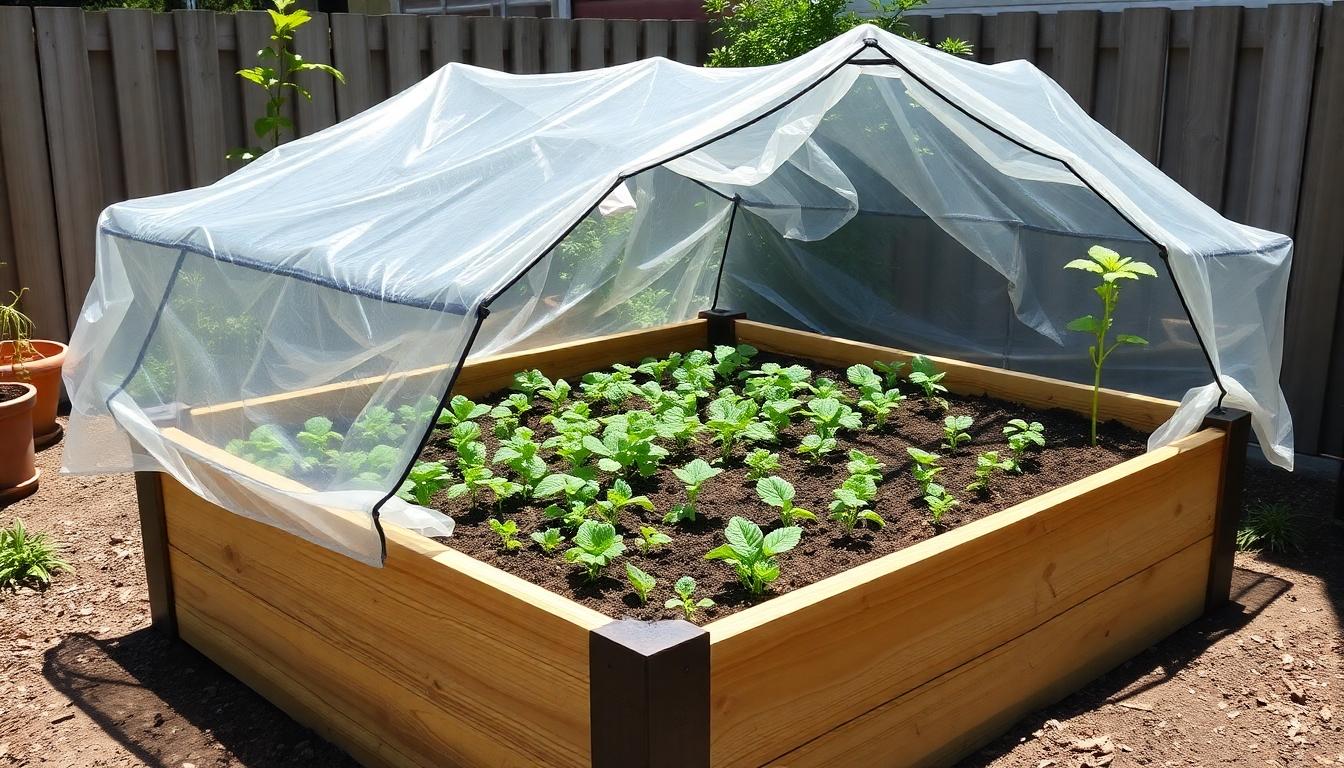
Extend your growing season and protect your plants from harsh weather conditions with specialized raised bed attachments. These practical modifications allow you to start planting earlier in spring and continue harvesting later into fall or winter.
Cold Frame Attachments
Cold frames offer excellent protection for seedlings while maintaining optimal growing conditions in your raised beds. Frame It All provides bolt-on cold frame kits priced at $54.99, featuring hinged, angled frames with clear PVC covers designed specifically for 4′ x 4′ raised garden beds. DIY enthusiasts can follow YouTube tutorials that demonstrate how to build cold frames using basic materials like 2x4s and door hinges, incorporating 45°-angled supports for increased stability. Replacement parts starting as low as $0.59 are available for Frame It All products, ensuring long-term usability with minimal maintenance costs. Several manufacturers, including Eagle Peak and Mulberry Greenhouses, offer raised bed compatible cold frames specifically designed for frost protection. These attachments effectively reduce wind exposure while increasing soil temperature, creating ideal conditions for seedling development as noted by Gardener’s Supply.
Greenhouse Cover Options
Transparent covers made from PVC or polycarbonate provide the perfect balance between durability and light transmission for your raised bed greenhouse attachments. Frame It All’s innovative design allows covers to slide over beds and zip together, creating expanded coverage for multiple bed setups. UV-resistant materials should be prioritized when selecting greenhouse covers, as they substantially extend the lifespan of your covers when exposed to harsh weather conditions. Many modern cold frame designs incorporate ventilation features such as hinged lids or removable panels, allowing precise temperature control during warmer days. Eagle Peak’s cold frames come equipped with reinforced canopies that offer superior weather resistance while maintaining essential light penetration. These modular designs adapt to various raised bed sizes, making them versatile additions to any garden setup requiring season extension capabilities.
Water-Wise Raised Garden Bed Systems
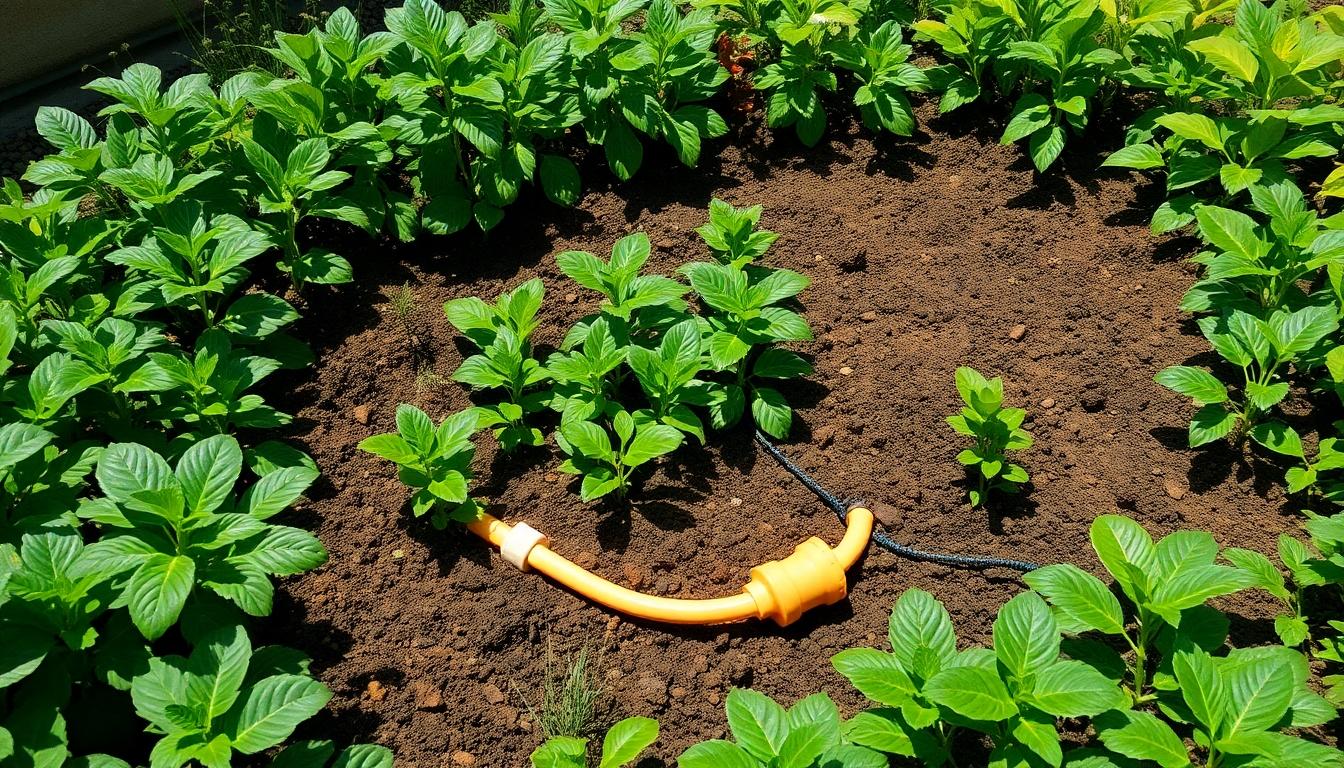
Water conservation is essential for sustainable gardening. These innovative raised bed systems help maximize water efficiency while keeping your plants thriving.
Sunken Garden Beds
Sunken garden beds offer an excellent solution for water conservation in raised bed gardening. These specialized beds are intentionally dug several inches below ground level, creating a depression that captures irrigation water. Unlike traditional raised beds, sunken designs prevent runoff by allowing water to pool and gradually seep into the soil. This design keeps both soil and plant roots cooler during hot seasons, reducing water loss through evaporation. Gardeners in arid regions particularly benefit from this technique as it maximizes the effectiveness of limited water resources.
Terracotta or PVC Pipe Garden Beds
Material choice significantly impacts water retention in raised garden beds. Terracotta beds provide a porous growing environment ideal for plants that prefer drier soil conditions like herbs and Mediterranean species. The natural clay composition allows excess moisture to escape while maintaining adequate humidity. PVC pipe systems, conversely, excel at water retention by creating semi-closed environments where moisture is preserved. These pipe structures can be arranged vertically or horizontally to create unique planting opportunities. Both options offer specialized water management answers depending on your exact plant needs and local climate conditions.
Self-Watering Bed Designs
Sub-Irrigated Planters (SIPs) revolutionize raised bed watering by incorporating a reservoir beneath the soil. These innovative systems enable plants to access water as needed through capillary action. SIPs typically feature a wicking layer that draws moisture upward into the root zone, ensuring consistent hydration without waterlogging. Aeration screens, often created using perforated drain pipes, prevent soil saturation by allowing proper oxygen flow. Many gardeners report important water savings with SIPs while enjoying healthier plants and reduced maintenance time.
Another effective self-watering approach uses waterproof lining combined with perforated drain pipes. This system begins with a waterproof barrier lining the raised bed, creating a contained environment. A serpentine pattern of drain pipes covered in fabric distributes water evenly throughout the bed. Fill tubes allow for easy reservoir replenishment, while strategically placed drain holes prevent overflow during heavy rain. This design provides efficient irrigation directly to plant roots while minimizing water waste from evaporation or runoff.
Wicking Bed Technology
Wicking beds represent cutting-edge water conservation for raised garden systems. These specialized beds use a water reservoir positioned beneath the planting mix to provide continuous moisture. The soil acts as a natural wick, drawing water upward to plant roots as needed. This passive irrigation method ensures plants receive consistent moisture without human intervention, making it ideal for busy gardeners or vacation periods. Aeration screens play a crucial role in preventing waterlogged conditions by maintaining proper oxygen levels in the soil.
The wicking bed design supports optimal growing conditions by keeping soil moisture levels consistent. Plants develop stronger root systems as they grow toward the water source. Gardeners typically see reduced water usage compared to traditional irrigation methods since evaporation is minimized and water delivery is targeted directly to roots. These systems work particularly well in hot, dry climates where water conservation is paramount, providing reliable plant hydration even during extreme weather conditions.
Portable and Modular Raised Garden Bed Ideas
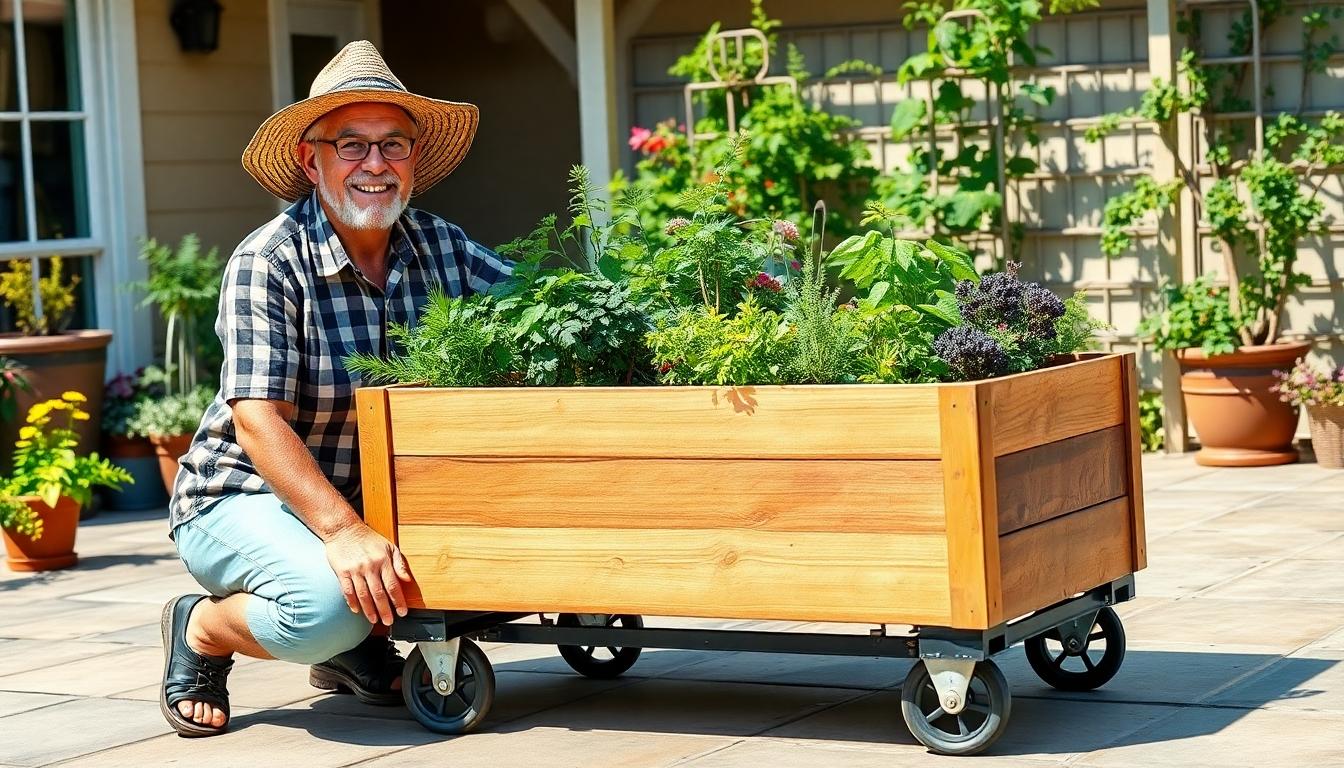
Portable and modular raised garden beds offer flexibility that traditional fixed beds simply can’t match, allowing gardeners to adapt their growing spaces as needs change throughout the seasons.
Rolling Garden Bed Options
Rolling garden beds represent one of the most practical innovations for adaptable gardening spaces. These mobile designs feature heavy-duty wheels or casters that make repositioning your garden incredibly simple, allowing you to chase optimal sunlight conditions or quickly move plants to shelter during harsh weather. Wooden beds mounted on sturdy wheels work particularly well for this purpose, combining durability with mobility. For smaller spaces or balcony gardens, grow bags provide an excellent alternative to wooden rolling beds. These lightweight, frost-resistant fabric containers offer exceptional portability while promoting healthy root development through their breathable material. Grow bags also thaw quickly in spring, making them ideal for early-season planting of herbs and annual vegetables that benefit from consistent soil temperatures.
Interlocking Modular Systems
Interlocking modular garden bed systems revolutionize the way we approach garden design by offering unprecedented customization. Pre-fabricated kits featuring expandable panels with secure locking mechanisms enable gardeners to create beds in various configurations, including rectangular, L-shaped, or custom designs that fit exact spaces. Materials for these systems range from natural cedar to galvanized steel or recycled plastic, each offering different benefits about longevity and sustainability. Stackable units take advantage of vertical space while creating visually interesting tiered gardens, often incorporating trellises that support climbing plants like beans or cucumbers. Brickless assemblies using interlocking concrete or composite blocks eliminate the need for mortar, dramatically simplifying both initial installation and future reconfiguration as your gardening needs evolve.
When selecting portable or modular systems, material durability becomes a critical consideration. Rot-resistant woods like cedar and redwood, powder-coated metals, or UV-stabilized plastics will significantly extend the lifespan of your garden beds. Proper soil depth remains essential even in portable systems, with 12-24 inches providing adequate space for healthy root development while reducing the need to bend excessively during maintenance. Drainage features deserve special attention in portable beds; ensure your chosen system includes adequate drainage openings or incorporates naturally porous materials like those used in grow bags to prevent waterlogging and promote plant health.
Conclusion: Choosing the Right Raised Garden Bed for Your Space
Raised garden beds offer endless possibilities for transforming any outdoor space into a thriving garden. Whether you’re working with limited square footage or seeking ergonomic answers we’ve explored options that can adapt to your unique needs.
From budget-friendly upcycled materials to specialized designs for exact plants there’s a raised bed solution waiting for your green thumb. Consider your space constraints climate garden goals and physical needs when selecting the perfect design.
Remember that raised beds aren’t just practical gardening answers—they’re also beautiful industry features that enhance your outdoor living experience. With the right raised garden bed you’ll enjoy improved yields easier maintenance and a more enjoyable gardening journey for years to come.
Frequently Asked Questions
What are the main benefits of raised garden beds?
Raised garden beds offer improved drainage, reduced soil compaction, and less back strain while gardening. They create defined growing spaces with better soil quality that warms up faster in spring. Additionally, they add aesthetic appeal to your yard, complement various landscape styles, and can be customized to fit any space, making them ideal for both beginners and experienced gardeners.
How can I create a raised garden bed in a small space?
For small spaces, consider vertical tiered gardens, corner L-shaped beds, railing planters, or rolling raised beds that can be moved as needed. Other space-efficient options include spiral herb gardens, window box raised beds, keyhole gardens, stacked container towers, and hanging gutter gardens. These designs maximize growing potential while maintaining visual appeal in limited areas.
What are some budget-friendly materials for building raised beds?
Repurpose wooden pallets (ensure they’re heat-treated), concrete blocks, reclaimed wood from old furniture, stacked tires, old feed tanks, or fabric grow bags. Look for materials at construction sites, recycling centers, or online marketplaces. Always prioritize non-toxic materials and ensure proper drainage to maintain plant health and safety.
How can vertical raised garden beds maximize my growing space?
Vertical raised beds increase planting area through tiered designs, wall-mounted planter systems, and integrated trellises. These structures utilize vertical space, making them perfect for small yards or urban settings. They improve water retention, enhance visual interest, and keep harvests within easy reach while effectively doubling your growing area by using the space above garden paths.
What unique shapes work well for raised garden beds?
Beyond rectangular designs, consider curved beds for visual appeal and sloped yards, spiral configurations for herbs, or geometric patterns like the “Four-Garden Classic” layout. Diamond or hexagonal patterns create striking focal points while still providing ample growing space. These distinctive shapes can transform your garden into an organized and visually stunning outdoor feature.
How tall should an ergonomic raised garden bed be?
Ergonomic raised beds should be waist-high (30-36 inches) to reduce strain on backs, knees, and joints. For wheelchair accessibility, maintain a height of 24-30 inches with at least 36-inch wide paths between beds. The width of the bed should allow comfortable reach to the center (typically 3-4 feet). These adjustments make gardening more inclusive and comfortable for everyone.
What multi-functional elements can I add to my raised beds?
Incorporate vertical elements like trellises for climbing plants, design multi-level beds for sloped properties, add built-in seating to create outdoor living spaces, or integrate storage compartments for gardening tools. These additions enhance both the beauty and functionality of your garden beds, transforming them into versatile outdoor features.
How can I optimize raised beds for specific plants?
Create herb spiral gardens to establish microclimates for different herbs or implement square foot gardening layouts that organize plants into one-foot squares. These specialized approaches optimize growing conditions, improve plant spacing, promote healthy growth, and can significantly increase yields compared to traditional row gardening methods.
What modifications extend the growing season in raised beds?
Add cold frame attachments or greenhouse covers to protect plants from harsh weather. Cold frames work excellently for seedlings, while transparent greenhouse covers enhance light transmission. These modifications create optimal growing conditions year-round, allowing earlier planting and later harvesting to maximize your garden’s productivity through multiple seasons.
How can I create water-efficient raised garden beds?
Consider sunken garden beds for arid regions, terracotta or PVC pipe systems for unique water retention, self-watering designs with sub-irrigation, or wicking bed technology that provides continuous moisture. These water-wise systems significantly reduce water usage while keeping plants properly hydrated, making them ideal solutions for sustainable gardening, especially in hot, dry climates.
What are portable raised garden bed options?
Install heavy-duty wheels on garden beds for easy repositioning to optimize sunlight exposure or protect plants from harsh weather. Alternatively, use interlocking modular systems made from cedar, galvanized steel, or recycled plastic that can be reconfigured seasonally. These flexible options ensure proper soil depth and drainage while adapting to changing garden needs throughout the year.

